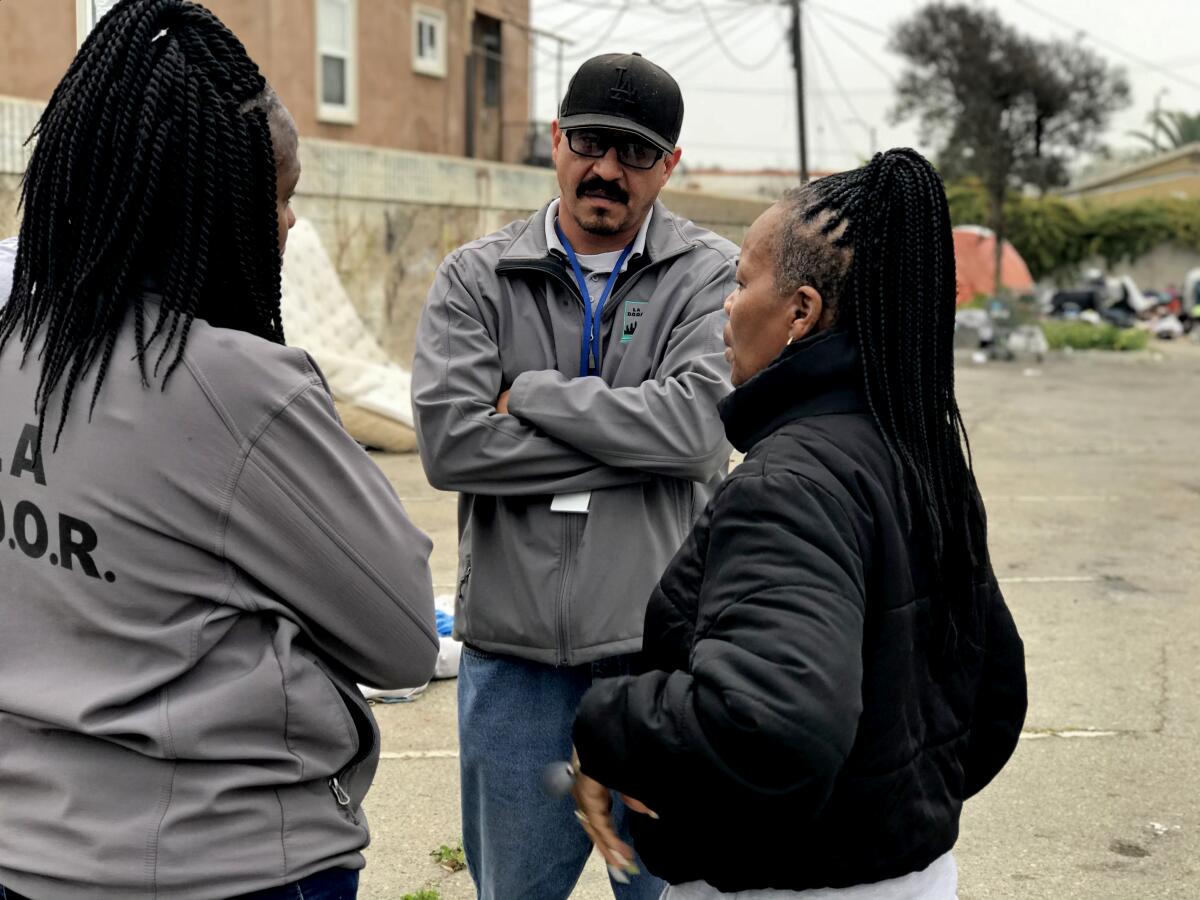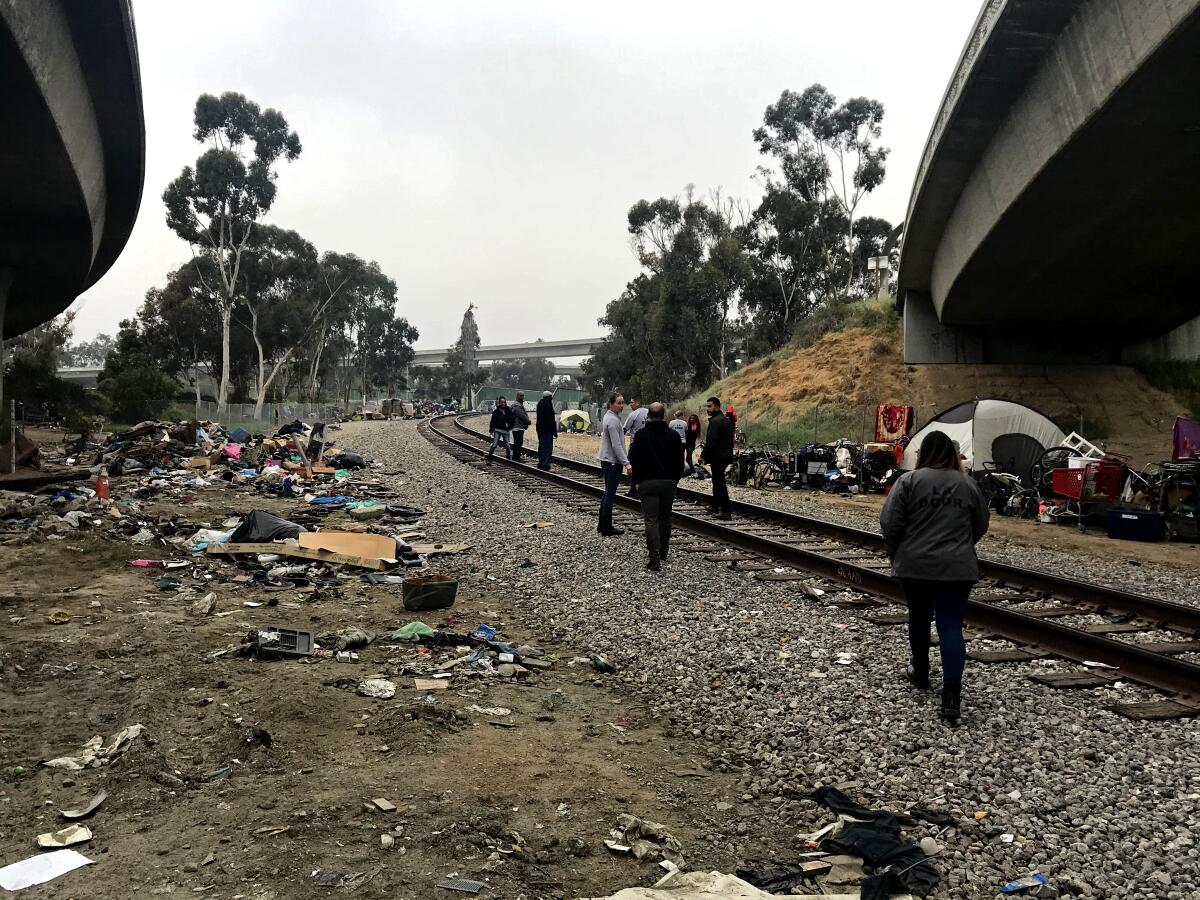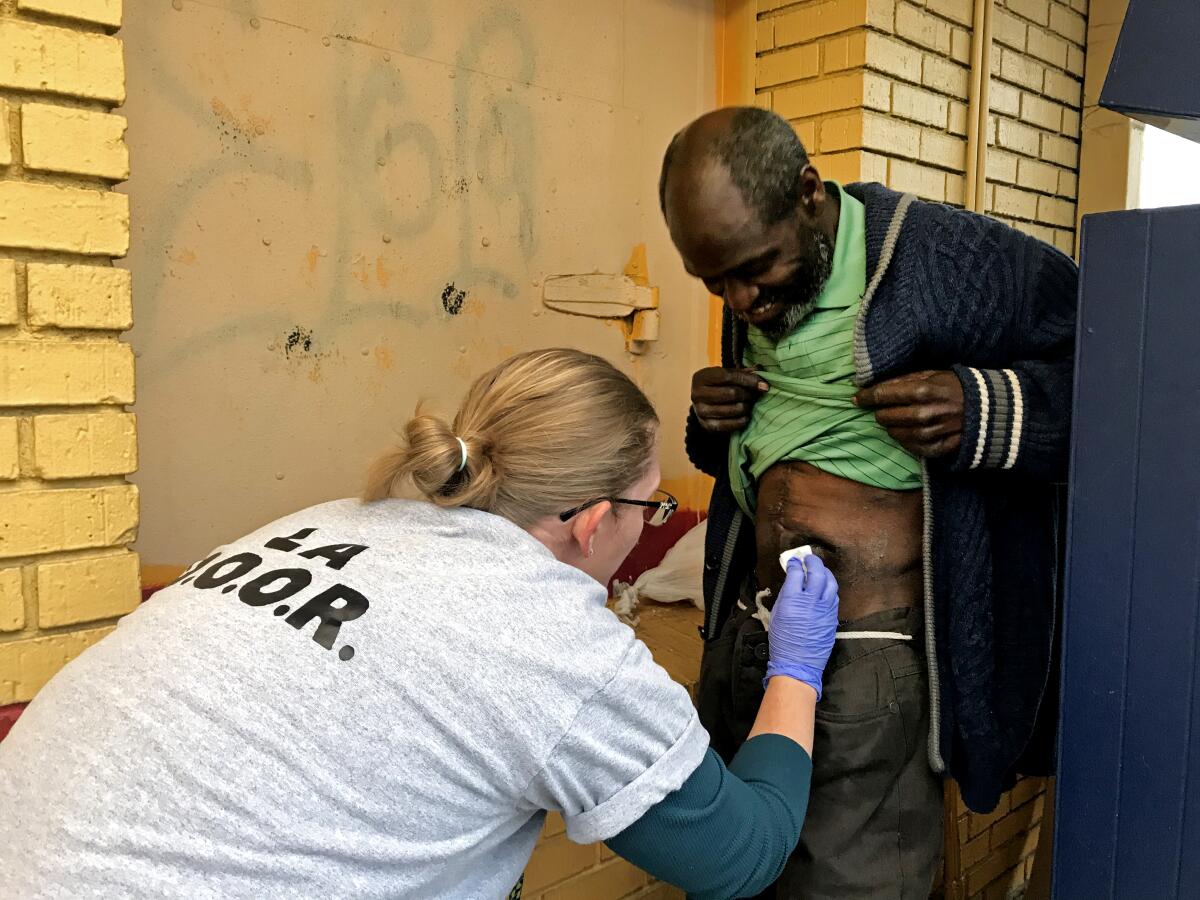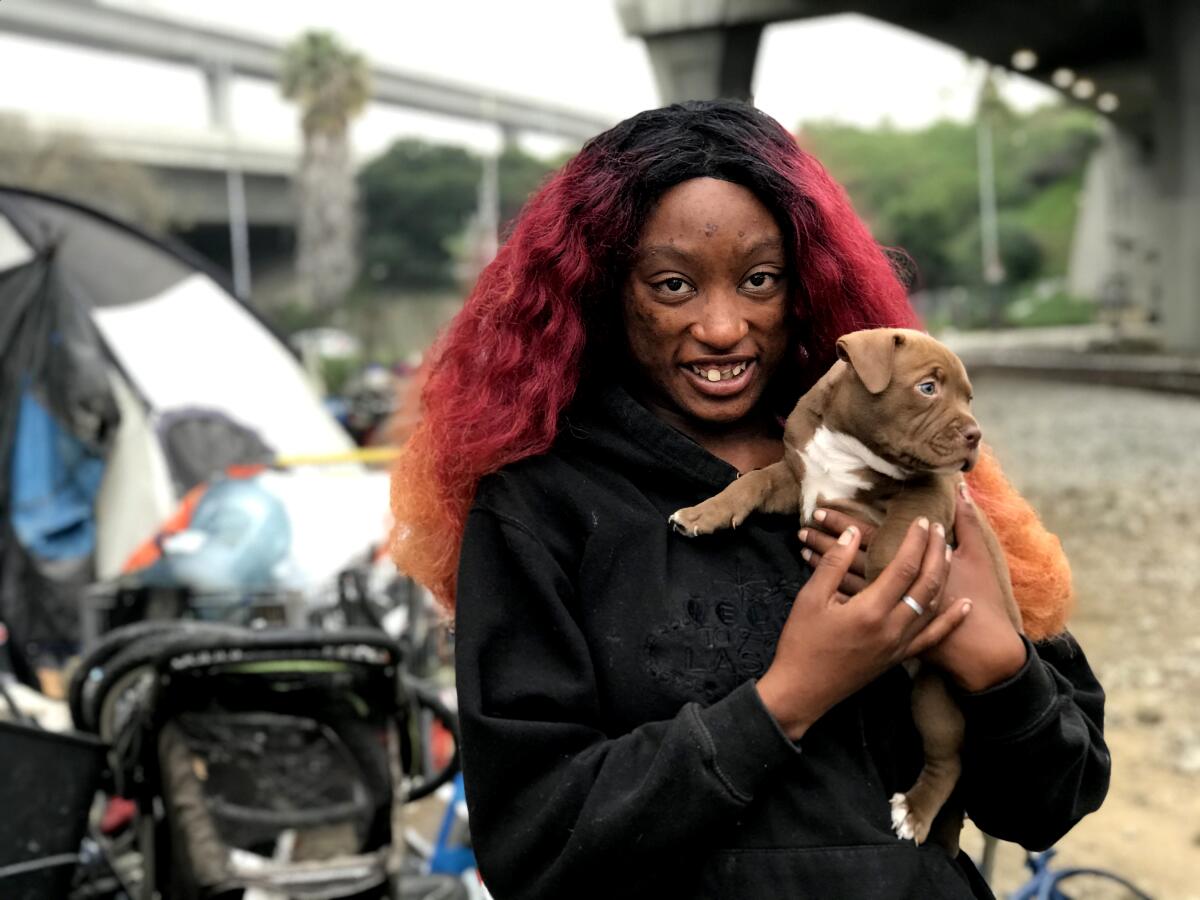Column: A Los Angeles prosecutor tries to keep addicts out of court and jail

My instructions were very clear: Arrive by 6:30 a.m. at the offices of the Project 180 social service agency in South Los Angeles.
Why so early? I asked Jamie Larson, the city prosecutor who had invited me to witness the work of a pilot program aimed at helping some of the city’s many homeless drug abusers get clean, stay out of court and jail, and — best-case scenario — into safe housing.
“We have to get them before they’re high,” she explained.
Fifteen members of the team — a nurse, a therapist, case managers, a supervisor — gathered in a windowless conference room to talk about the clients they’d be looking for that morning at several locations near freeways in South Los Angeles.
At an encampment called Tent City, along the edge of an active Union Pacific railroad track under the 105 and 110 freeways, a young woman who had repeatedly missed doctor appointments would need a ride to Kaiser. Another client, a 60-ish man who sleeps on the streets, would need help with post-surgery dressing. The team would also be building relationships with potential clients, people they visit every week, suspicious or fearful people with whom they are trying to build trust.

“What works is consistency,” said Larson. “That’s everything.”
As the team prepared to hit the streets, Jose Rodriguez, the field team supervisor who led the meeting, said, “It’s the first of the month, watch yourselves.”
He must have seen the quizzical look on my face.
“Social Security checks,” he said. Money for drugs. One of the encampments we’d be visiting — in an abandoned parking lot next to the 105 Freeway near Vermont Avenue — was known to be very “active,” meaning lots of drug sales, drug use and antisocial behavior. Two tents there had recently been torched.
He gave us a safe word — “rose” — and told that me if I heard it while we were in any of the encampments, to get the hell back to the car.
And so began another workday for LA DOOR, “Diversion, Outreach, and Opportunities for Recovery,” Larson’s 3-year-old brainchild.
“When I worked in health services in San Francisco,” she told me, “I saw how much power prosecutors have. That’s why I went to law school.”
But she didn’t want to be a prosecutor who simply sent people to jail. She first worked in San Diego and in Imperial County, she said, where the idea of sentencing someone to drug treatment instead of jail “wasn’t a really welcome option at the time.”

But after 2014’s Proposition 47 passed, which reduced many felonies to misdemeanors, Los Angeles City Atty. Mike Feuer was looking for new approaches. Clogging the courts with people charged with misdemeanor drug arrests, trespassing or petty theft seemed counterproductive. Few defendants go to jail for those transgressions; they just end up with longer rap sheets and lousier prospects.
Larson spent a couple of years developing the program, which launched in January 2017. The idea is to divert people before they ever land in the criminal justice system. The program, which serves about 260 people in various stages of treatment and recovery, is funded through the end of the year, and then she hopes to be able to raise $1 million a year after that to keep it going. Larson says the program has made a difference for many of its clients, something she expects an ongoing Rand Corp. study to confirm. A handful are now living in transitional housing.
“I don’t think of LA DOOR as specifically a homeless intervention,” Larson told me. “It’s a criminal justice intervention that does the things we wish we could do before anyone ever gets to court. We have to recognize that the criminal justice system is ill equipped to solve homelessness, addiction and mental health issues. The metric I am most interested in is whether people are taking advantage of social services they would not have accessed otherwise.”
Having a prosecutor lead an effort like this is what makes it unique among services offered our most benighted citizens. It’s going to take money, imagination and effort to solve what seems like an apocalypse of drug use and homelessness out there. This is one of many efforts across the city, and one that seems well worth funding.

After the case management meeting, I piled into a car driven by Jorge Hernandez, 38, a “peer navigator,” and among the Project 180 staffers who have been detached to the LA DOOR program. (Project 180 helps keep folks out of prison and jail by offering a wide range of services like mental health and drug counseling, job training and placement, etc.)
Hernandez told me he was born and raised in East L.A., and, like his other peer navigator colleagues, had experienced homelessness and drug abuse himself. “My dad left when I was 12,” he said. “But I had a lot of mentors.”
He said he spends five days a week in the field, in some of the city’s most hellish encampments. He loves every minute of his job.
We began by looking for a man known as Midnight. We soon found him, lying on a piece of cardboard, wedged into the narrow space behind a Church’s Chicken and its drive-up display board .
Ten years ago, Midnight told me, he was shot in the abdomen by a stranger while he was walking down a nearby street. Ever since, he’d worn a colostomy bag. When the LA DOOR team first encountered him a little over a year ago, the bag was often overflowing.
“I was ripping and running and careless,” he told me while a man in a pest control service uniform fiddled with rat traps next to us. “I’ve been a hustler all my life.”
Outreach workers began trying to help by changing the bag for him, or taking him to a clinic, he said. Recently, they persuaded him to have surgery to close the hole in his side. On this visit, licensed vocational nurse Sarah Grove re-dressed his healing wound. She used to work as a private nurse for rich people, she told me, but finds this work so much more gratifying.
Receiving proper care — and proper benefits — has been a challenge for Midnight. He does not have government ID, a problem that plagues many who live on the bottom rung of the social ladder. When LA DOOR tracked down his birth certificate, there was no first name. He does not have a Social Security card. Or a driver’s license, or a passport.
“We don’t give up,” said Grove.
This is what people who have lost hope really need: someone who refuses to give up on them.
More to Read
A cure for the common opinion
Get thought-provoking perspectives with our weekly newsletter.
You may occasionally receive promotional content from the Los Angeles Times.











